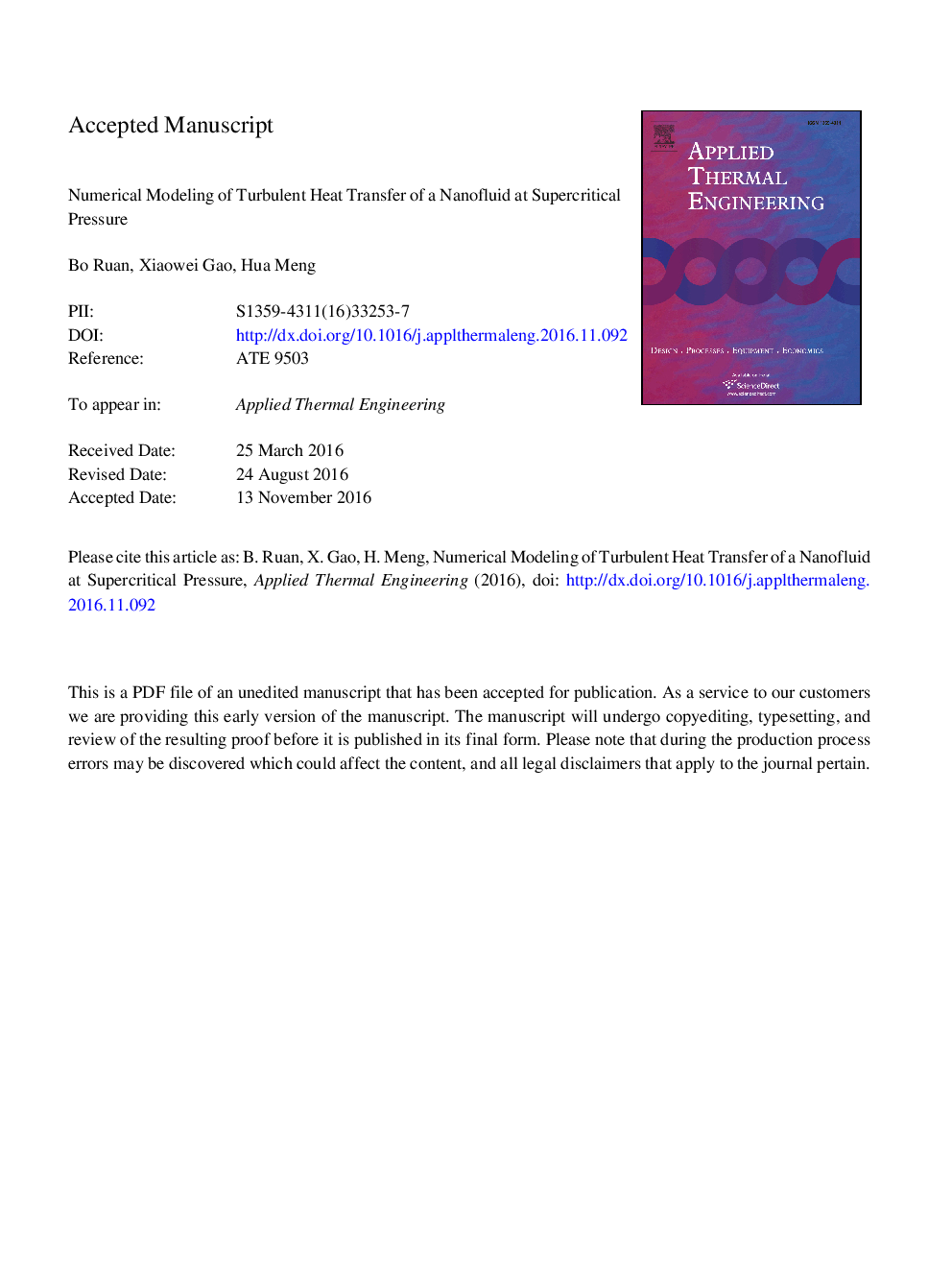| کد مقاله | کد نشریه | سال انتشار | مقاله انگلیسی | نسخه تمام متن |
|---|---|---|---|---|
| 4991872 | 1457116 | 2017 | 43 صفحه PDF | دانلود رایگان |
عنوان انگلیسی مقاله ISI
Numerical modeling of turbulent heat transfer of a nanofluid at supercritical pressure
ترجمه فارسی عنوان
مدل سازی عددی انتقال گرما آشفته یک نانوسیم در فشار فوق بحرانی
دانلود مقاله + سفارش ترجمه
دانلود مقاله ISI انگلیسی
رایگان برای ایرانیان
کلمات کلیدی
خنک کننده احیا کننده اموال حرارتی متان، افزایش انتقال حرارت، پدیده انتقادی،
موضوعات مرتبط
مهندسی و علوم پایه
مهندسی شیمی
جریان سیال و فرایندهای انتقال
چکیده انگلیسی
A numerical study has been conducted to examine the turbulent heat transfer of a nanofluid, methane-CuO, in a circular cooling tube at a supercritical pressure of 8Â MPa, a phenomenon relevant to the rocket engine cooling application. Results reveal that at a surface heat flux of 3Â MW/m2 and an inlet flow velocity of 25Â m/s, the addition of nanoparticles decreases the heat transfer rate, dictated by significant increase of the nanofluid viscosity, which leads to the decreased turbulent viscosity in the near-wall buffer zone. As the surface heat flux is increased to 7Â MW/m2 or the inlet velocity is decreased to 10Â m/s, however, two physical phenomena of heat transfer improvement are observed in the nanofluid. The first phenomenon, which starts almost immediately from the beginning of the heated section, is controlled by strong increase of the nanofluid density, which results in the increased turbulent viscosity in the near-wall buffer zone. The second phenomenon is dictated by thermophysical property variations in the near-wall turbulent flow region as fluid temperature transits from the subcritical to supercritical state (the transcritical process). Results indicate potential applications of nanofluids in enhancing heat transfer at supercritical pressures.
ناشر
Database: Elsevier - ScienceDirect (ساینس دایرکت)
Journal: Applied Thermal Engineering - Volume 113, 25 February 2017, Pages 994-1003
Journal: Applied Thermal Engineering - Volume 113, 25 February 2017, Pages 994-1003
نویسندگان
Bo Ruan, Xiaowei Gao, Hua Meng,
